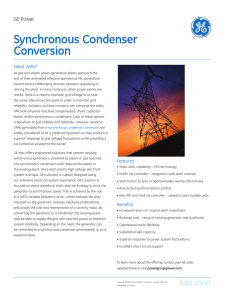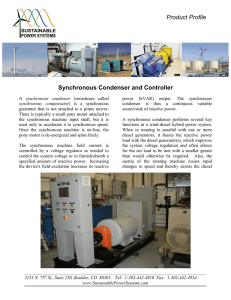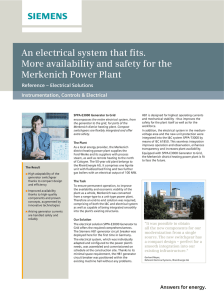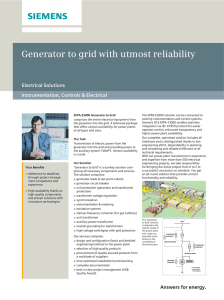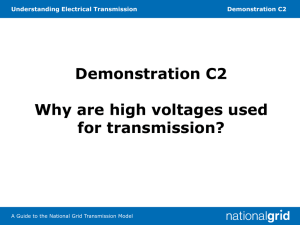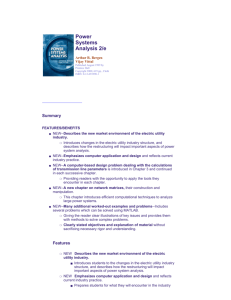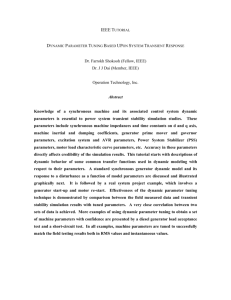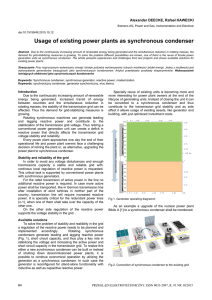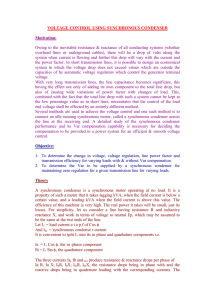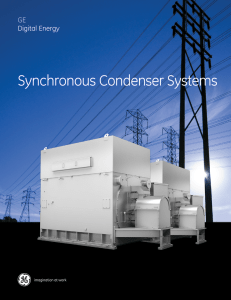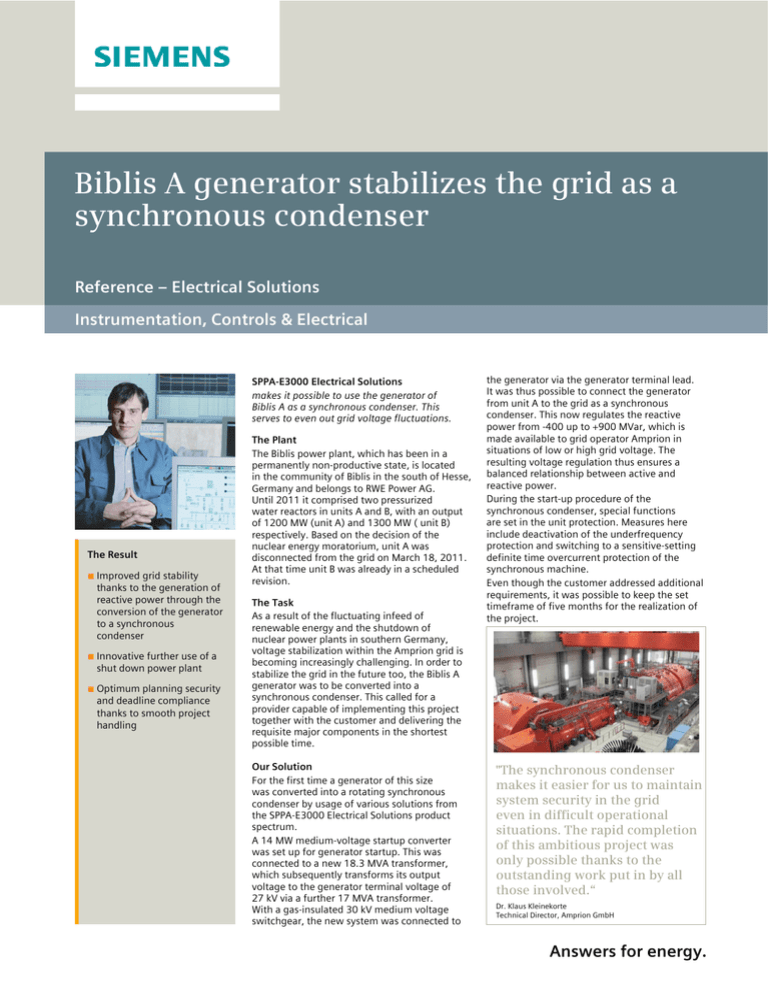
Biblis A generator stabilizes the grid as a
synchronous condenser
Reference – Electrical Solutions
Instrumentation, Controls & Electrical
SPPA-E3000 Electrical Solutions
makes it possible to use the generator of
Biblis A as a synchronous condenser. This
serves to even out grid voltage fluctuations.
The Result
■ Improved grid stability
thanks to the generation of
reactive power through the
conversion of the generator
to a synchronous
condenser
■ Innovative further use of a
shut down power plant
■ Optimum planning security
and deadline compliance
thanks to smooth project
handling
The Plant
The Biblis power plant, which has been in a
permanently non-productive state, is located
in the community of Biblis in the south of Hesse,
Germany and belongs to RWE Power AG.
Until 2011 it comprised two pressurized
water reactors in units A and B, with an output
of 1200 MW (unit A) and 1300 MW ( unit B)
respectively. Based on the decision of the
nuclear energy moratorium, unit A was
disconnected from the grid on March 18, 2011.
At that time unit B was already in a scheduled
revision.
The Task
As a result of the fluctuating infeed of
renewable energy and the shutdown of
nuclear power plants in southern Germany,
voltage stabilization within the Amprion grid is
becoming increasingly challenging. In order to
stabilize the grid in the future too, the Biblis A
generator was to be converted into a
synchronous condenser. This called for a
provider capable of implementing this project
together with the customer and delivering the
requisite major components in the shortest
possible time.
Our Solution
For the first time a generator of this size
was converted into a rotating synchronous
condenser by usage of various solutions from
the SPPA-E3000 Electrical Solutions product
spectrum.
A 14 MW medium-voltage startup converter
was set up for generator startup. This was
connected to a new 18.3 MVA transformer,
which subsequently transforms its output
voltage to the generator terminal voltage of
27 kV via a further 17 MVA transformer.
With a gas-insulated 30 kV medium voltage
switchgear, the new system was connected to
the generator via the generator terminal lead.
It was thus possible to connect the generator
from unit A to the grid as a synchronous
condenser. This now regulates the reactive
power from -400 up to +900 MVar, which is
made available to grid operator Amprion in
situations of low or high grid voltage. The
resulting voltage regulation thus ensures a
balanced relationship between active and
reactive power.
During the start-up procedure of the
synchronous condenser, special functions
are set in the unit protection. Measures here
include deactivation of the underfrequency
protection and switching to a sensitive-setting
definite time overcurrent protection of the
synchronous machine.
Even though the customer addressed additional
requirements, it was possible to keep the set
timeframe of five months for the realization of
the project.
"The synchronous condenser
makes it easier for us to maintain
system security in the grid
even in difficult operational
situations. The rapid completion
of this ambitious project was
only possible thanks to the
outstanding work put in by all
those involved.“
Dr. Klaus Kleinekorte
Technical Director, Amprion GmbH
Answers for energy.
Published by and Copyright © 2013:
Siemens AG, Energy Sector
Freyeslebenstraße 1
D-91058 Erlangen
For more information, contact
sppa-e3000.energy@siemens.com
www.siemens.com/energy/sppa-e3000
Siemens AG
Fossil Power Generation
Instrumentation, Controls & Electrical
Siemensallee 84
D-76187 Karlsruhe
E307_FR_BiblisA_e_V1-0
Order no. E50001-G230-A334-X-4A00
Printed in Germany
Dispo 05401, c4bs-No. 7465
Printed on elementary chlorinefree bleached paper.
Unrestricted
AL:N ECCN:N
All rights reserved.
Trademarks mentioned in this document the
property of Siemens AG, its affiliates, or
their respective owners.
Subject to change without prior notice.
The information in this document contains
general descriptions of the technical options
available, which may not apply in all cases.
The required technical options should
therefore be specified in the contract.

